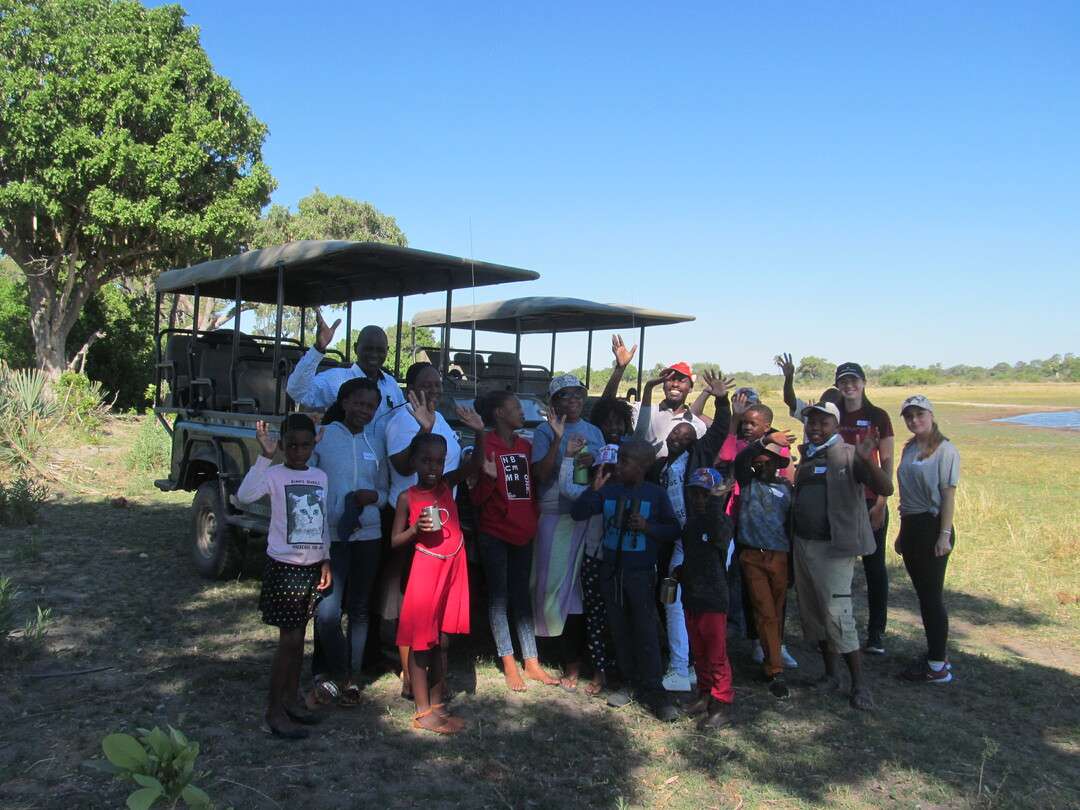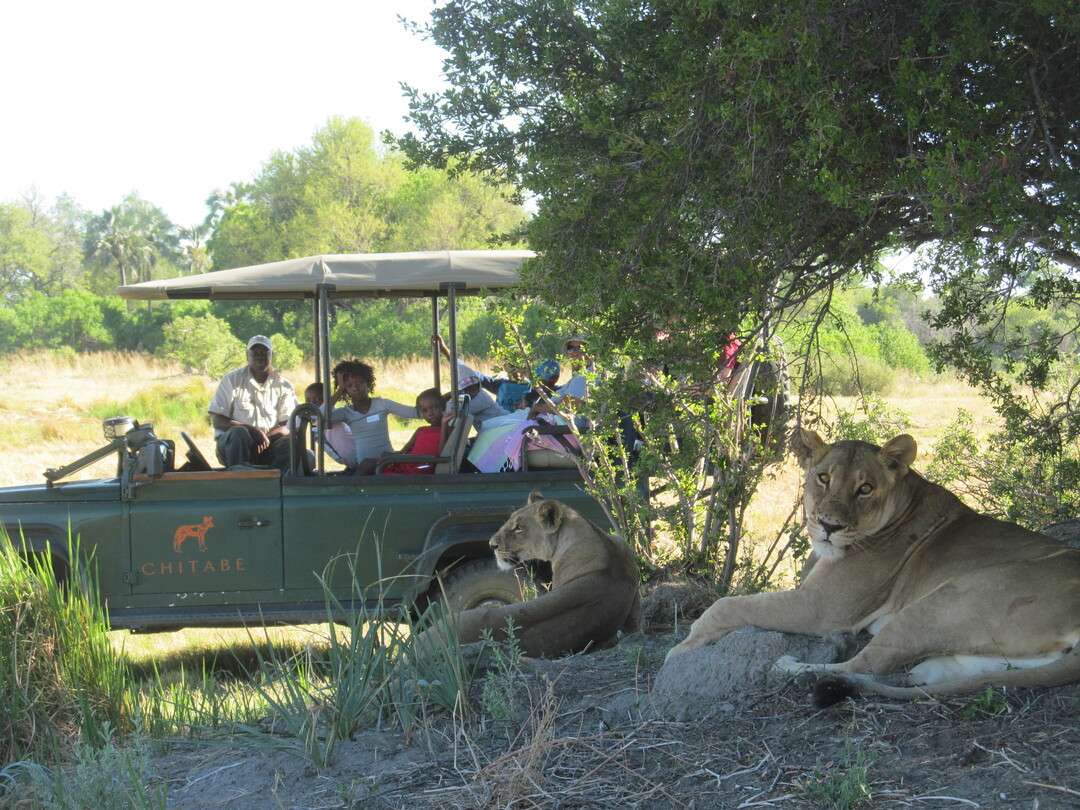Chitabe
Spotlight on Chitabe Camp, Botswana
Our Collective
Melissa Siebert
5/17/2021
If you’re into wildlife, and wildlife photography, look no further. Chitabe ‘is a wildlife photographer’s dream’, says Dave Hamman. And he should know. Co-owner, with wife Helene, of Chitabe and its smaller sister camp, Chitabe Lediba, Dave is a world-renowned photojournalist and filmmaker. One who raves about the ‘photo ops’ at Chitabe – and for good reason.
Both Chitabe camps – comprised of Meru-style tents set on an island and linked by elevated walkways – are located in the 28 000-hectare Chitabe Concession, a game-rich area in the south-east of the Okavango Delta, separated from the renowned Moremi Game Reserve by the Gomoti Channel. The habitat is varied, supporting a huge diversity of flora and fauna and producing excellent year-round game viewing and birding. Moving east to west, the landscape changes from grassy floodplains and woodland of mopane and acacia, to seasonal palm-dotted floodplains, wooded islands, and dry woodland. Given the abundance of predators and prey, Chitabe promises few dull moments. Wild dogs – on the endangered species list and always a special sighting – regularly make a star turn.
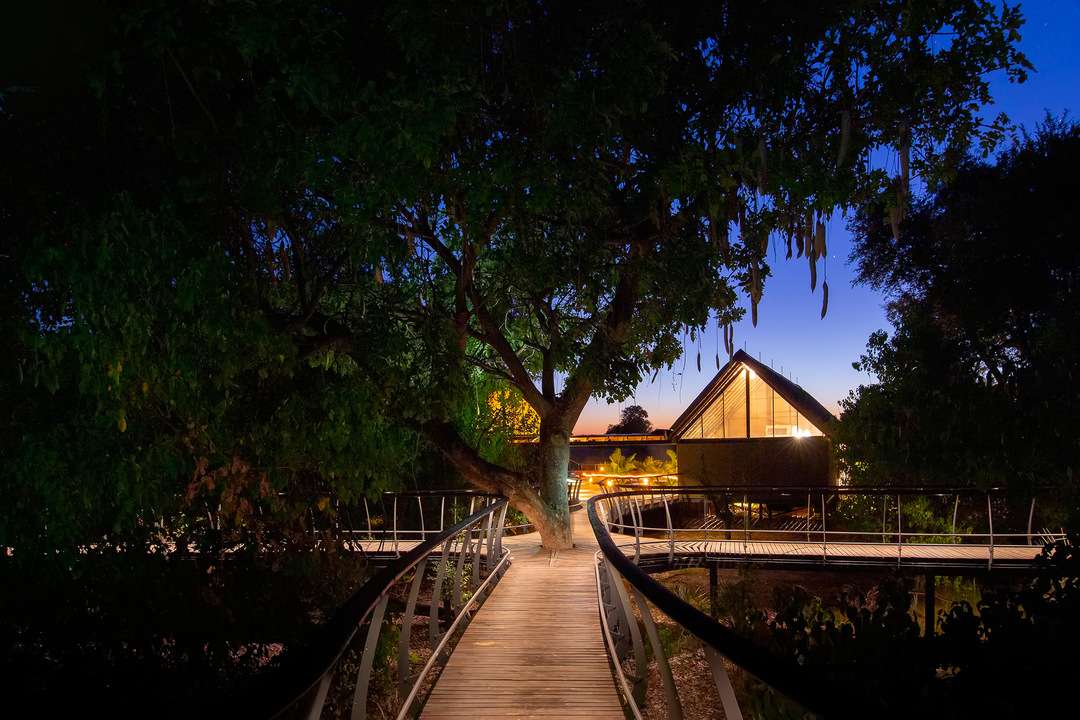
We spoke with Chitabe and Chitabe Lediba co-owner Helene Hamman and Chitabe Lediba Manager and former guide Letswe Moalosi about the overall Chitabe experience. Read more from Dave on the rewards – and challenges – of photography at Chitabe.

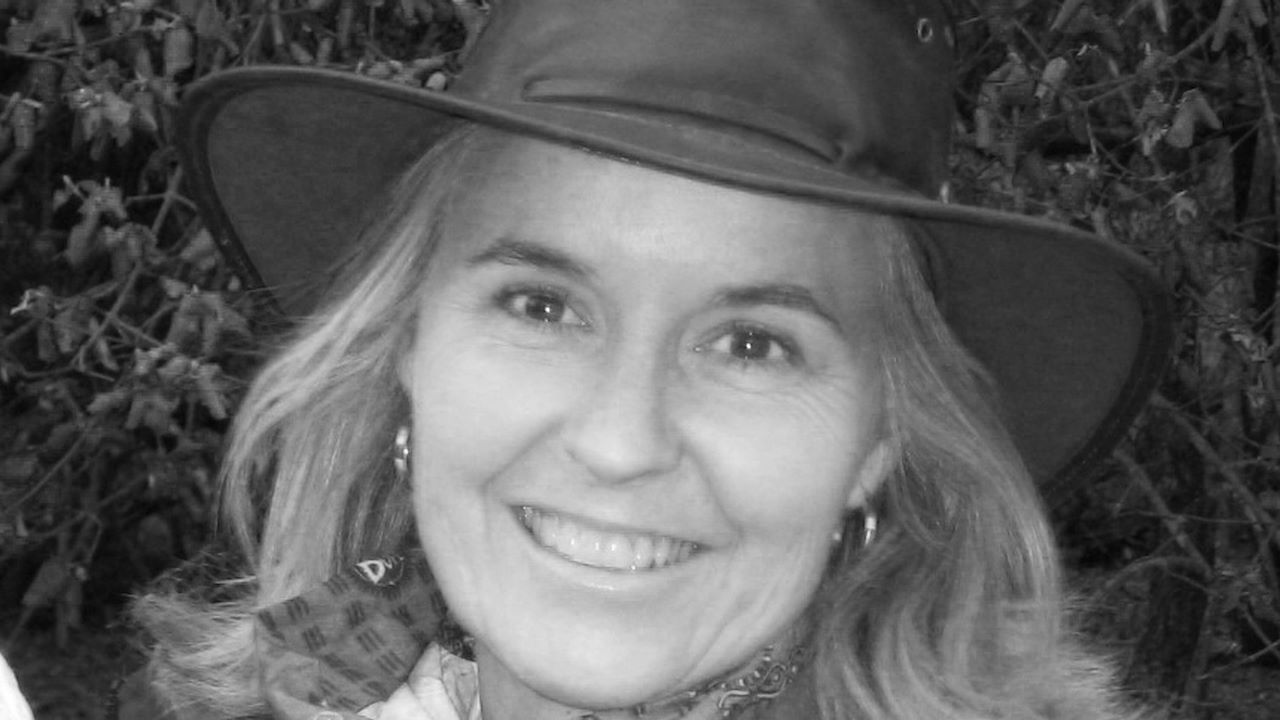




What Makes Chitabe and Chitabe Lediba Special? Are There Significant Differences Between Them, Other Than Size?
(Helene) In the 24 years that Chitabe and Chitabe Lediba have been operating, we have developed an enviable reputation for providing our guests with a magnificent African experience, enthralling them not only with the rich flora and fauna of the Chitabe Concession, but also enabling them to experience the warmth, hospitality, and culture of our amazing staff. It’s this combination that makes Chitabe and Chitabe Lediba special. The two camps are located approximately 400 metres apart but feel completely separate, as they each have their own infrastructure and staffing. Chitabe has eight rooms, two more than Lediba, which also has two family rooms. The whole of Chitabe is on elevated walkways and all common areas are raised off the ground. This elevation gives the camp a different feel to Lediba, also built off the ground but quite a bit lower. The activities are the same at both camps and our guides work at both on a rotational basis, or when requested by our guests. We have quite a bit of flexibility between the two camps, depending on the group size, we can increase the numbers at one camp and reduce them at the other – as long as we stay within our concession limit of 30 guests.
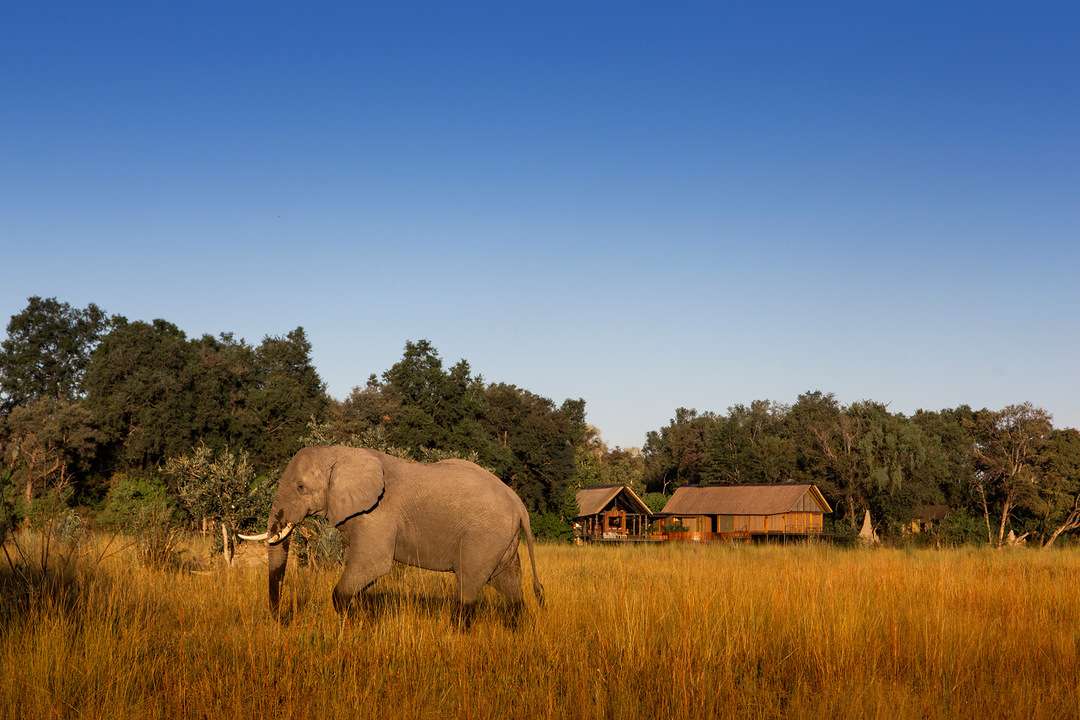
(Moalosi) For the purpose of exclusivity and intimacy, instead of building one larger camp, Chitabe and Chitabe Lediba were built separately, though operating in the same area with the same activities. The raised walkways almost connect the two camps, providing easy access between them – an ideal layout for larger groups accommodated in both camps in terms of meeting for game drives or other activities, socialising, and meals.
Chitabe Lediba is a superb family, child-friendly camp. It has two family suites that each accommodate a family with kids, up to five persons per suite. Lediba offers a complimentary service of child-minding staff acting as the kids’ ‘Bush Buddies’. The camp has kids’ menus, a child-friendly library, an array of kids’ indoor games, and of course game drives for the whole family. Small groups between 10 and 14 people can book Lediba for sole-use – for instance, friends travelling together on a photographic safari, or multi-generational family celebrating a reunion or other occasion.
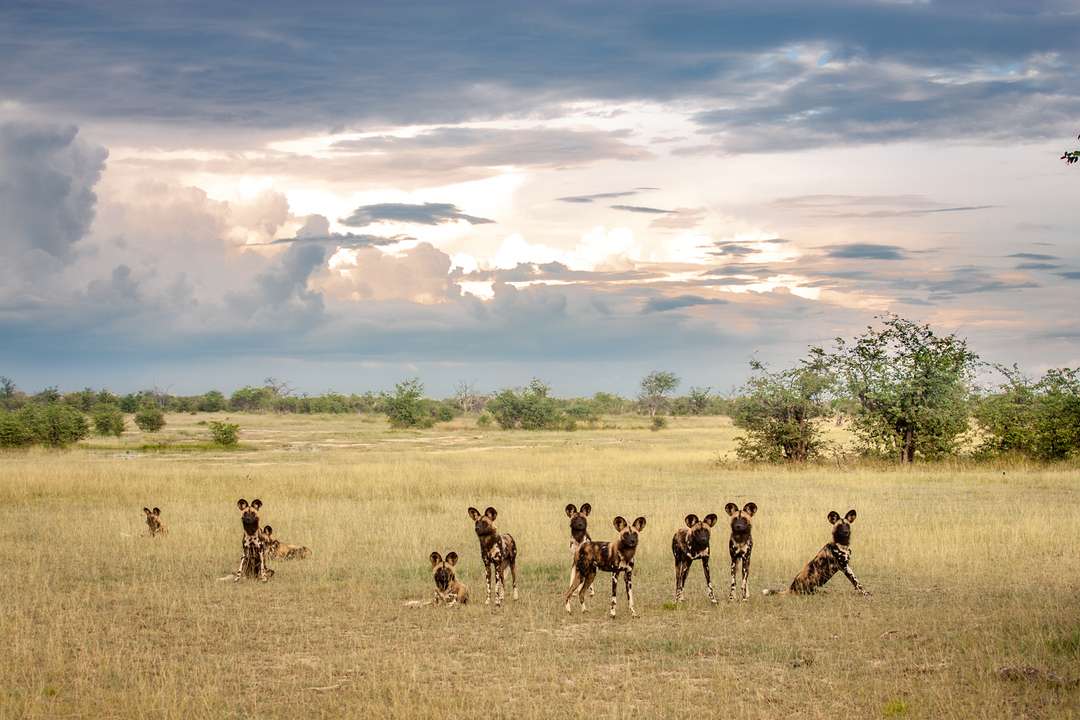
What Do YOU Most Love About Chitabe?
(Helene) Chitabe is one of those places that you want to visit again and again. The area is so consistently diverse and rich with game that every drive is rewarding, and each day seems to give one a glimpse of something different and unique. Chitabe has very high predator concentrations, so our guests get to see truly amazing sightings and interactions. We are also fortunate to have many staff who have been with us for years, some even since our inception . Having a stable and consistent team is vital to running a successful safari camp.
(Moalosi) The habitat diversity influences different activities and experiences here. Although we don’t have any water activities, at the Gomoti River guests get to witness from the banks the action on and in the water, with myriad birds, crocodiles, and hippos. Activities here are not restricted to game drives; seasonal walking adventures (May – November usually, when the grass is shorter and visibility better) connect you to the African bush and are always thrilling. Since Chitabe is not in a national park, we have more flexibility to explore the bush, including, for instance, strictly controlled off-road driving in search of certain sightings on night drives . Our guides have been doing a great job of spotting elusive nocturnal creatures such as bush babies, porcupines, genets, owls, civets, serval, leopards, and many more.
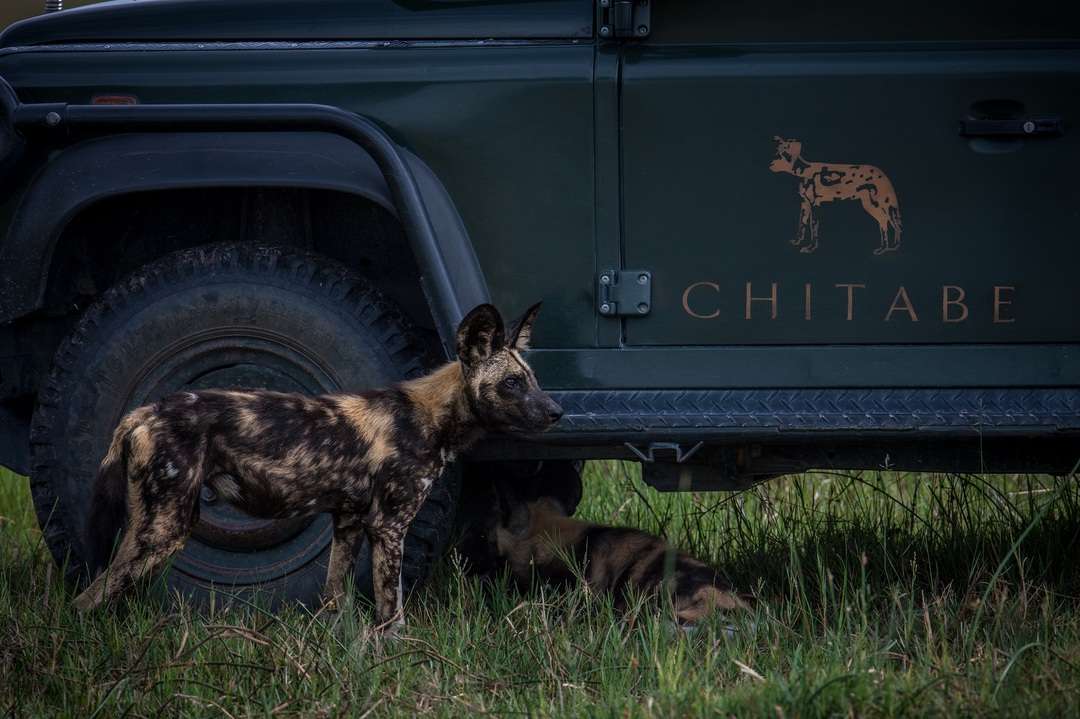
What Does The Name ‘Chitabe’ Mean?
(Helene) Chitabe is the name of the area, and we have often heard that it means ‘place of zebra’ in local folklore.
Please Talk about the Wildlife Experience or a Few Anecdotes of Interesting Wildlife Encounters You’ve Experienced Here.
(Moalosi) With the abundance of prey species such as impala, red lechwe, kudu, buffalo, warthog, tsessebe, and zebra, Chitabe is home to a plethora of large predators – leopard, hyaena, African wild dog, cheetah, and even four resident lion prides. There are also many small predators, such as black-backed jackals. Watching the interactions among predators is an astonishing experience, happening regularly, usually over territory and food. The aggression occurs both within and between species, and if physical contact isn’t avoided between predators, it can prove fatal.
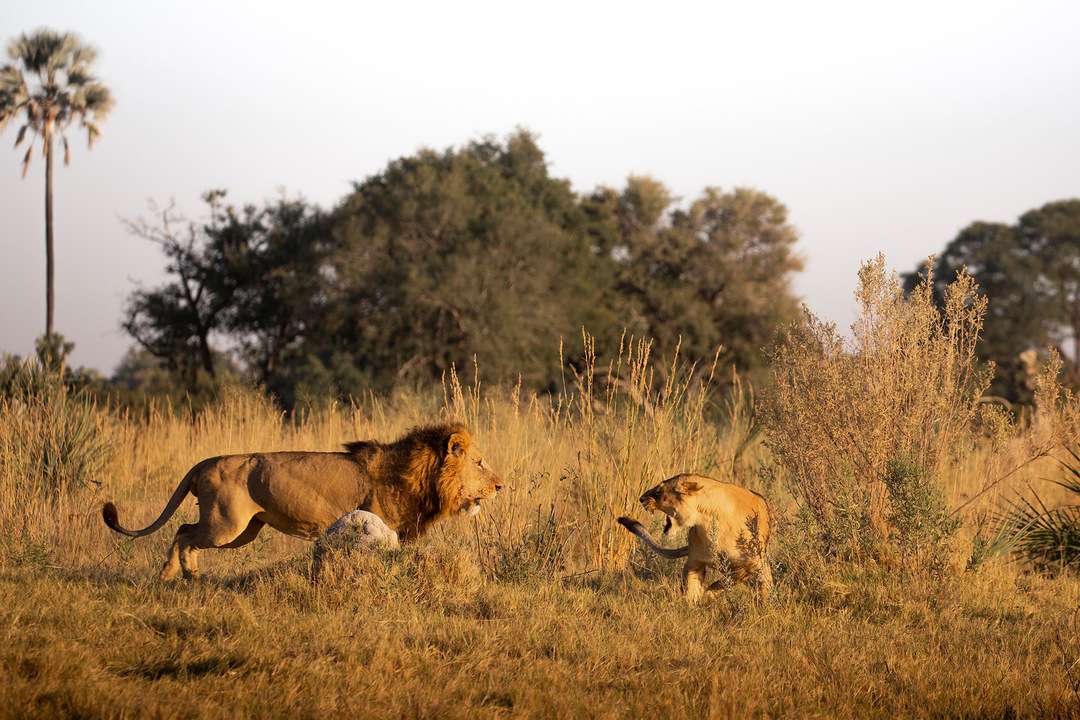
On a recent sighting of a wild dog pack, which we’d been following for 20 minutes, the pack eventually caught up with an intruding pack they’d been following and the chase began. Soon they ran into lions that had just finished an impala carcass stolen from the intruding wild dog pack. The dogs aborted the chase and showed more interest in the lions, which acted swiftly, protecting their cubs and chasing them away, and the dogs dispersed.
Among other memorable wildlife encounters:
- Watching 300-plus buffalos mixed with 80-plus elephants at a waterhole near the Lediba camp bridge. This happens quite regularly during the winter months (June, July, and August) as the area’s water sources become limited.
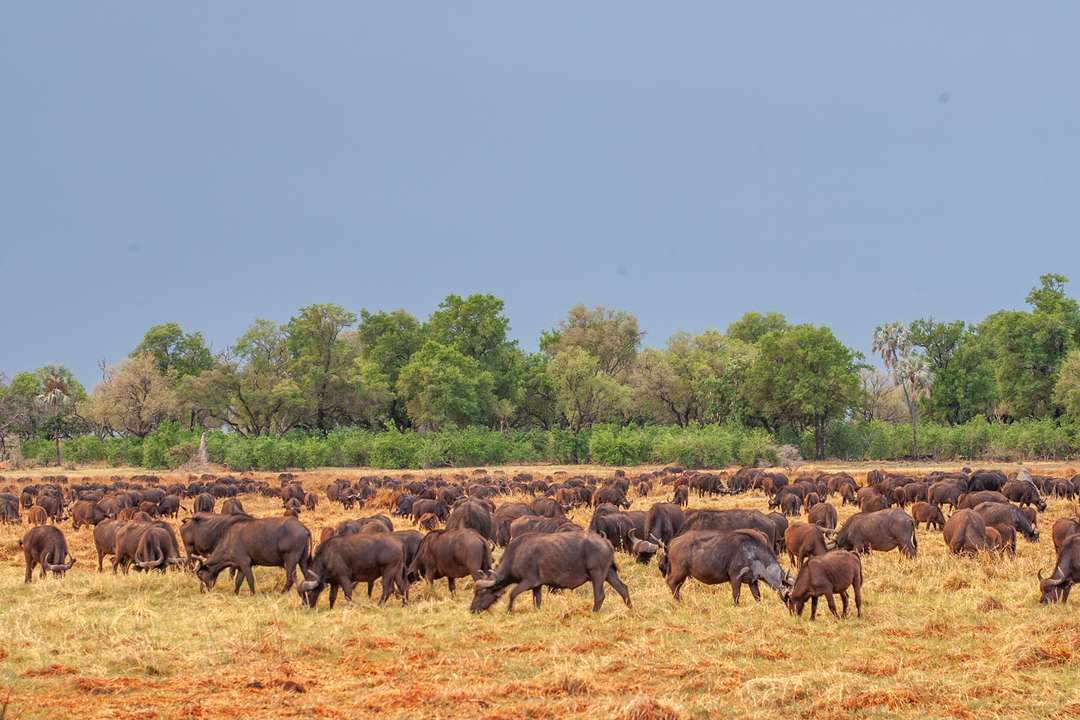
- Coming back from a game drive and listening to guests enthusiastically tell stories of lion cubs at play and mother lionesses nursing them.
- Hyaenas standing under a tree drooling while watching a leopard feed on an impala carcass in the tree limbs above.
- Occasionally at a waterhole, a feeding frenzy of pelicans, marabou storks, and saddle-billed storks wade through the water, enjoying an easy catch of catfish stranded in the mud trap.
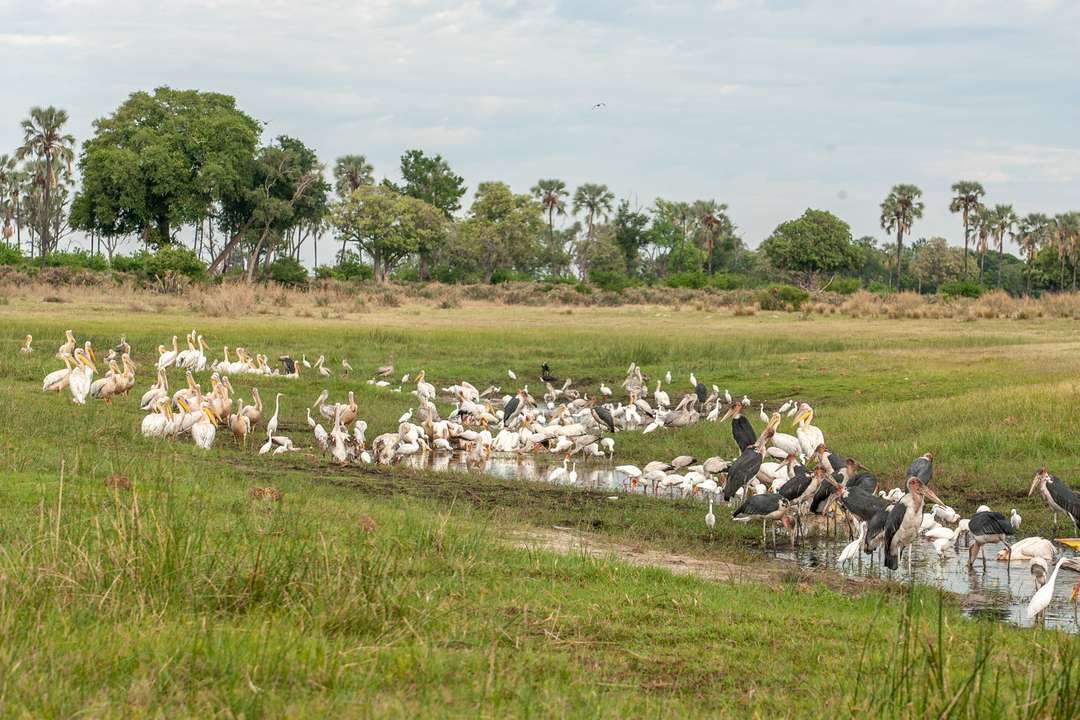
- A recent tracking of a cheetah on the hunt, with her two sub-adult cubs, nearly blowing her cover completely, as the cubs playfulness alerted the impala to the cheetah’s presence; the mother became more and more displeased and eventually skulked away from them. Finally she made a kill, and called the cubs to feed, after making sure the area was safe from other predators.
- A hyaena got into trouble with a hunting pack of African wild dogs that surprised him at his resting spot. Luckily, he became very submissive and was left alone.
- Often during the day, when guests are resting, elephants arrive and feed around guests’ rooms. Also at night, nothing gets you closer to nature by waking up to an elephant feeding by your window in the glow of the moon.
- Once we followed a thirsty leopard walking to a pan for a drink, when he arrived there he was surprised by an unexpected obstacle. A hippo popped out of the water, disturbing the leopard from drinking. They stood and stared at each for some time, with mutual curiosity.
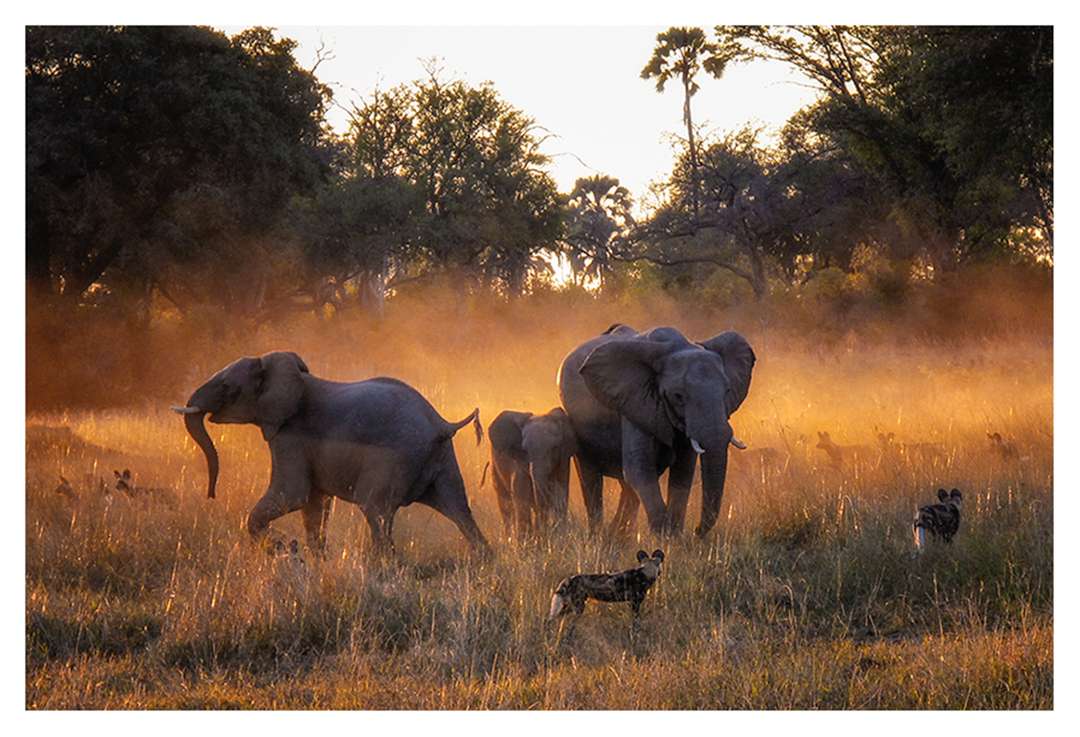
(Helene) There are so many wonderful encounters, but the ones that often stand out for me have to do with African wild dogs. We were on an afternoon drive and our guide, Anthony, was tracking the dogs. We had seen the pack earlier at their den, but they were now hunting and on the move. Anthony had anticipated where the dogs might be and had parked the vehicle in an open area waiting for them to emerge from the tree line. A small breeding herd of elephants was feeding in the floodplain nearby, unaware that the dogs might cross their path. Sure enough, within a few minutes the dogs emerged from the tree line and ran right past the elephants, who got noticeably agitated, trumpeting and creating a lot of dust while circling protectively around their young. The dogs were just playing with the elephants, teasing them. We watched the entire interaction from a perfect vantage point, as if it was a movie playing out right in front of us.
What Are Some of The Key African Bird Species That Guests Can Expect to See?
(Helene) Chitabe’s bird population is estimated at around 345 species, both resident and migratory, which confirms the area’s prolific diversity in birdlife. Two of the most iconic species at Chitabe are the wattled crane and slaty egret; Chitabe is a known breeding ground for these species. The hooded vulture is also well represented in the area. Other important and wonderful sightings include the secretary bird and the southern ground hornbill.
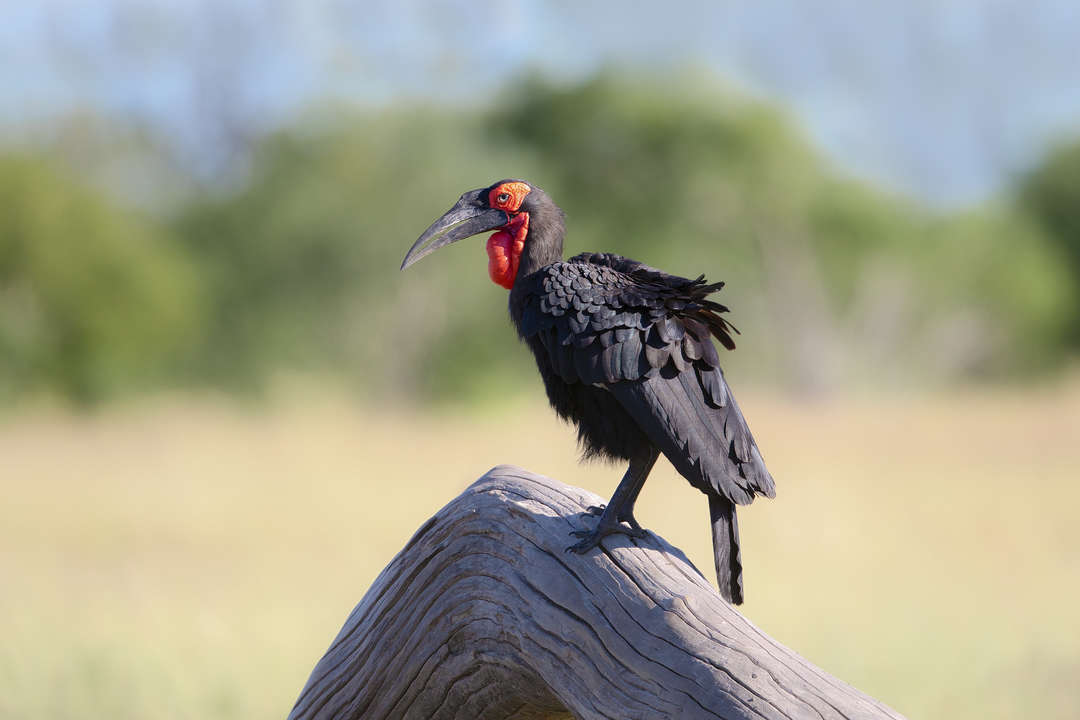
(Moalosi) Chitabe is home to many species of birds, some of which are endemic to the Delta. It’s a stronghold for some of the most endangered and protected species, such as the wattled crane. In the open grasslands there is always an opportunity to view and photograph majestic birds foraging, such as kori bustards, secretary birds, and southern ground hornbills. At waterholes, one has a chance of seeing different species of ducks; Egyptian geese; herons; egrets; storks; and pelicans. Birding for birds of prey is always a success at Chitabe, with many residents available, such as the martial eagle; African fish eagle; short-tailed snake eagle (bateleur); and tawny eagle. In summer, a number of migratory birds return to Chitabe for the season: yellow-billed kites; European rollers; broad- billed rollers; and woodland kingfishers. My highlight of this season was seeing a white stork regularly here.
How does the Chitabe experience compare with that of Wilderness various camps in the Okavango? Would you recommend pairing a stay at Chitabe with any of those other camps; if so, which ones, and why?
(Helene) Due to its outstanding wildlife experience, in particular predators and large fauna, Chitabe focuses on game drives and guided walks. In order to get the most out of one’s stay, I would recommend staying a minimum of three nights, preferably four or even longer. I would pair Chitabe with a water camp so as to get the variety of habitat, or possibly another camp outside of the Okavango Delta – in the Linyanti, for example. Some wonderful camps to pair with Chitabe would be Little Vumbura, Jacana, Tubu and Little Tubu, and Savuti.

(Moalosi) Chitabe’s habitats are uniquely diverse, with landscapes of seasonal to near perennial waterways and the Gomoti River, open grasslands, and woodlands making it home to different species of animals and birds all year round, and thus great for game viewing throughout the year. In other areas animals may seasonally migrate away due to conditions such as limited availability of water or good pasture. Here at Chitabe, animals often move around the concession, not out of it – for instance, to the Gomoti River, where there is water and green pasture most of the year.
So Chitabe has so much to offer on its own. Yet I would still recommend pairing it with other camps that offer something quite different, such as water activities or radically different scenery. Combining the following camps with Chitabe will give guests an amazing experience of Botswana from different aspects: for water activities, Little Vumbura, Kwetsani, Tubu Tree, and Jacana. Kalahari Plains for a taste of the Kalahari Desert. And. Savuti or DumaTau in the Linyanti.
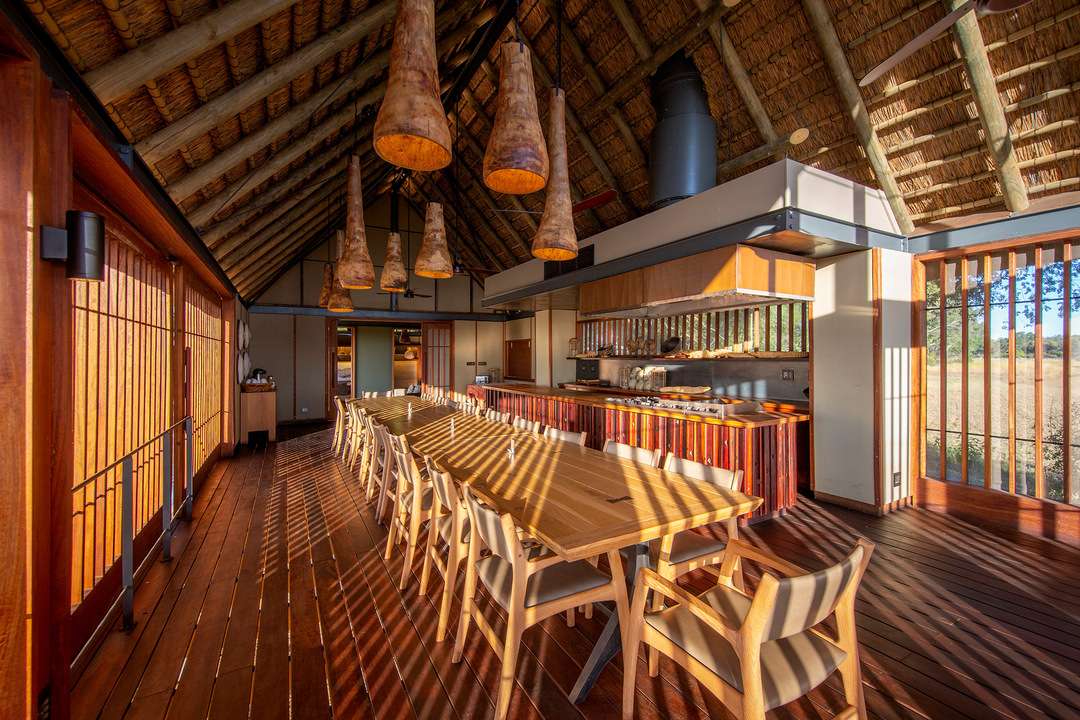
What’s Your Favourite Time of Day in/around Chitabe and Why?
(Moalosi) Here at Chitabe any time can make your day, but nothing beats an early morning start. For game viewing, it’s generally the most productive time, most animals become active as they begin their day’s agenda and while it’s still cooler. That said, late afternoon also sees the animals being active again, after they have rested in the shade during the peak of the day’s heat; many venture down to the waterholes then. Day-hunting predators such as wild dogs and cheetah use the window between dusk and dark to get on the move and hunt. As it cools down, lions and leopards become active, going into the night.

As for us humans, since Chitabe offers communal dining, I always look forward to suppertime – not only for Chitabe’s delicious meals but also for the pleasure of conversation with guests. One reason that many people travel is to meet and socialise with others from different parts of the world, so it’s always exciting to see the lively exchanges at the dinner table and to see strangers becoming friends.
(Helene) My favourite times of the day are sunrise and sunset, and the hour or so before and after them. Sunrise’s beginning glows and the fading hues of sunset are just beautiful – as if nature collectively rises with anticipation in the morning and sighs with contentment every evening. Each sunrise and sunset is like a gift for us to stop, pause, watch, and just absorb the gentle passing of another day.
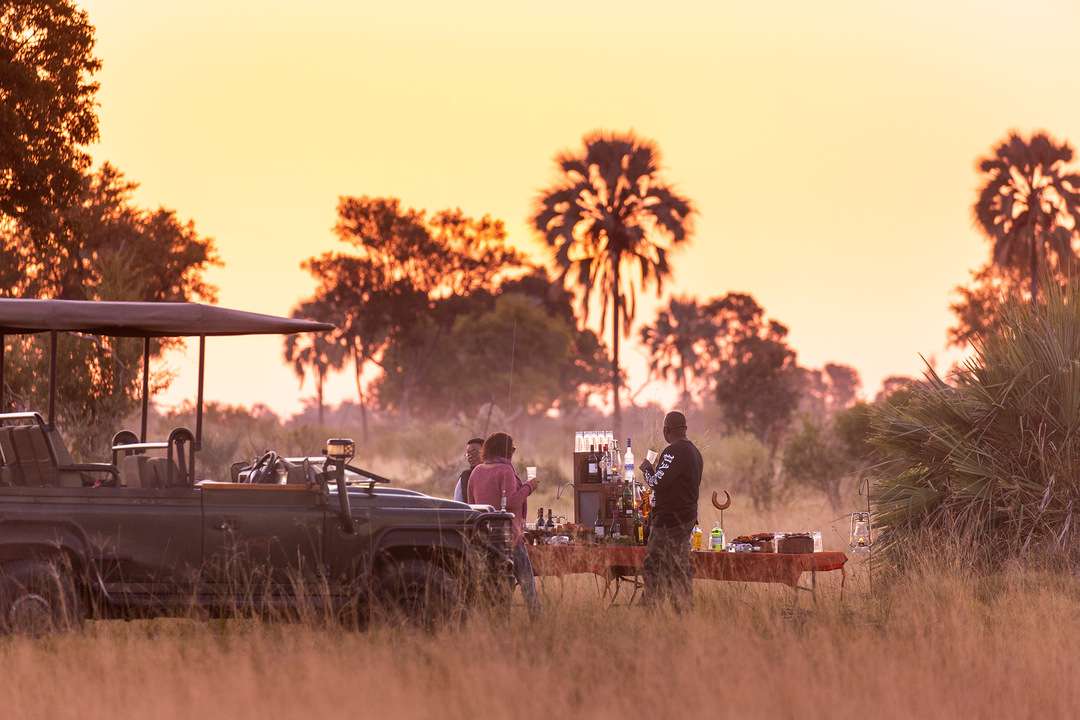
And Your Favourite Season There? Please Give Us A Sense Of The Difference Between The Seasons, In Terms Of Landscape, Weather, Wildlife Sightings Etc.
(Helene) I enjoy all the seasons, as each has its unique highlights. May/June – October is outstanding for game viewing, as the grass is shorter. June, July, and August, our winter months, boast stark blue skies and the annual inundation filling up the floodplains. The contrast between the blue water and yellow grass is striking. Mornings and evenings then can be chilly, but the days are always lovely. November – February is full of babies, summer migrants, impressive clouds, quenching cloudbursts, and lush green vegetation. In March and April, we experience the wonderful transition from the summer months towards the coming of the annual inflow of the waters.

(Moalosi) All seasons have their unique, highlights. December, January, and February comprise the rainy season, when the landscape undergoes an incredible transformation from dry brown and gold to luscious green. This time of year is a baby boom, triggering the birth of antelopes such as impala, wildebeest, tsessebe and others. It’s a field day for the predators as the newborns try to find their feet in a new environment. Though the dense bush can inhibit sightings and photography in those areas, it allows predators to hunt undetected. Prey species feel safer in the open, and lead predators there – which means wonderful sightings of leopards resting in trees, lions prowling across the plains, elephants playing at the waterholes. This is also the season for extraordinary sunrises and sunsets due to the cloud formations and colours.
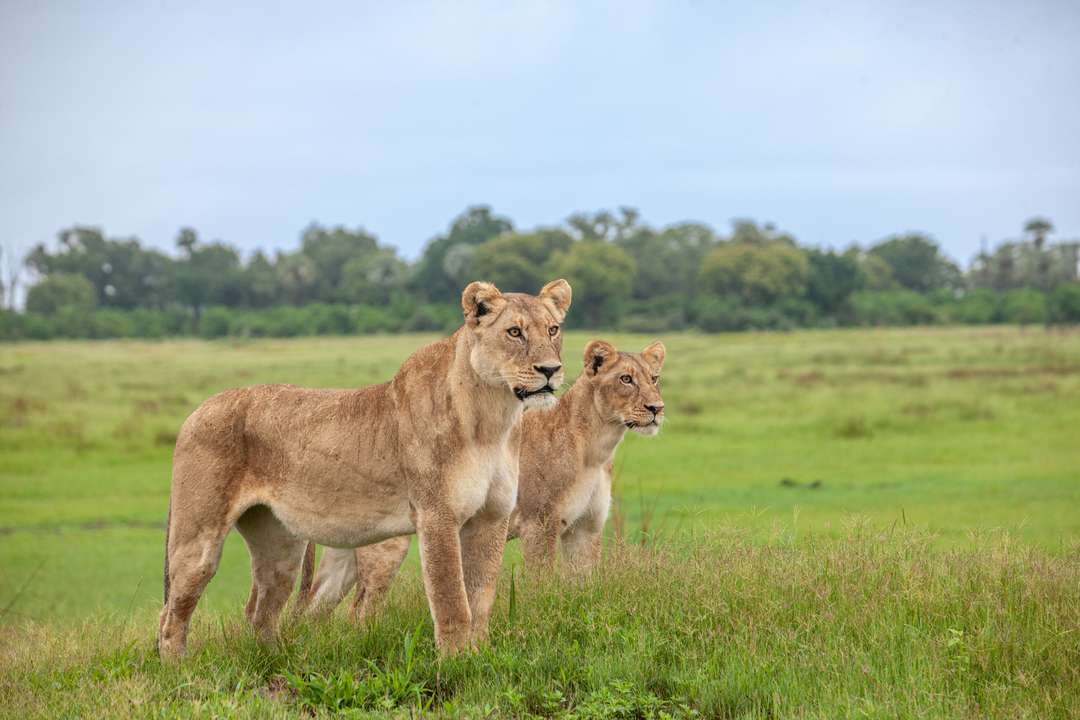
Winter into spring (May, June, July, August, and September) gives guests longer morning activities, taking advantage of cooler temperatures up to midday. Predators also tend to be more active for longer in the morning. This is the time of the year when most waterholes start drying up, leaving fewer places to congregate. Large herds of elephant, buffalo, and impala often move in and out of the floodplains from midday, enjoying some of the only remaining water in the area and attracting predators closer to the two camps.
October and November herald the start of summer, and its own brand of game viewing. The rainy season is about to start and animals prepare for calving. This is usually the best time to visit the Gomoti River, as most other water sources have dried up by then and so the animals gather around Gomoti.

What Kind Of Community And Conservation Work Are You Doing In The Area? Please Tell Us About Your Chitabe Staff Children In The Wilderness Initiative, Your Chitabe ‘Educate A Child’ Donation, And Anything Else You Are Involved In.
(Helene) Our vision at Chitabe has always been to provide the greatest possible social and economic benefits for Batswana, the local people. People are at the heart of our business, and we would like to deliver a meaningful, life-changing share of the proceeds of responsible eco-tourism to our community – the Chitabe employees who are instrumental in achieving our social and financial objectives. For many years we have encouraged our employees’ children to visit their parents at their place of work, in order to understand the extraordinary habitat in which we work, its value, the need to protect it, and the employment opportunities that it affords.
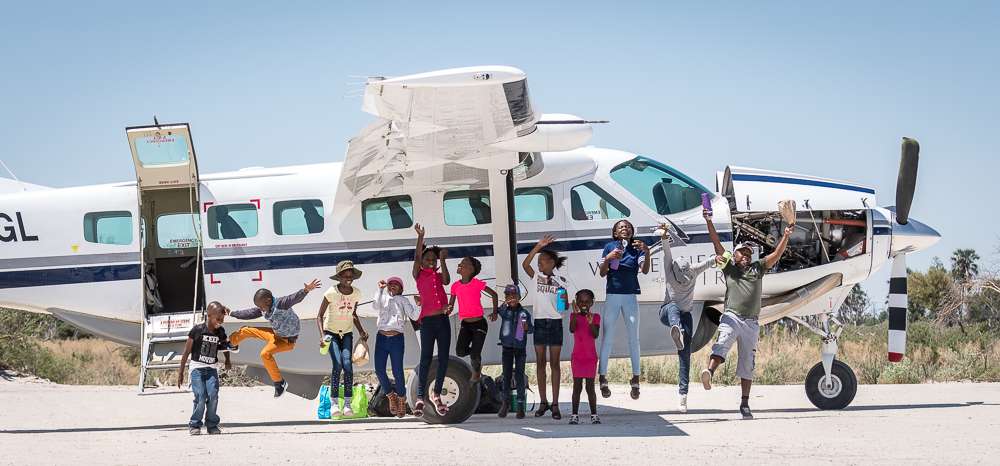
The Chitabe Staff Children in the Wilderness initiative occurs each December, when staff members’ children are invited to fly to Chitabe in a Cessna Caravan and spend two nights in camp with their parents. We close the camps for these two nights, forgoing revenue, so that we can all enjoy the festive season – gifting the children with education, fun, and adventure in their parents’ workplace. This initiative makes an enormous impression on the younger generation, showing them a hopeful future which can only help to encourage conservation and reduce poverty in the long run.
Our Educate a Child Donation is another initiative of which we are very proud. Each year Chitabe gives every employee a donation which covers school fees, books, and uniforms for at least one of their children and sometimes two. This donation is hugely appreciated by all our staff members; for those who don’t have children, we encourage them to use the funds to help nieces, nephews, or grandchildren or even to further their own education. I am proud to say that despite the enormous challenges presented by the COVID-19 pandemic, we were still able to continue to pay this donation in January 2021, a welcome relief to many of our staff, ensuring that their children could continue to go to school.
The last initiative I would like to mention is the one of profit sharing. Our philosophy is that simply providing a ‘job’ is not enough. For this reason, profit- sharing payments are made to all our staff, providing a very clear and direct correlation between dedicated work and reward. Our profit-sharing payments are always above any annual 13th bonus cheques. We firmly believe that improving the quality of life for our employees and their families is the key to economic development and sustainability.
What Items Are Essential For Guests to Pack for an African Safari?
(Helene) A hat; sunblock; lip balm; sunglasses; a small, lightweight torch; and binoculars. A bit of patience is always good. Most importantly, leave your worries behind.
(Moalosi) Sunscreen; rehydrating solution ; bug spray; and sunglasses. In the winter months guests are advised to bring warm clothes in bush-friendly colours, although we do supply warm ponchos for game drives and rainy-day use. Lap blankets for suppertime, early morning breakfast, and game drives are also kept in each camp for our guests. A pair of binoculars is also ideal to bring with, though each camp has a complimentary pair of binoculars for use while in camp in case guests forget to bring theirs. And of course your camera…
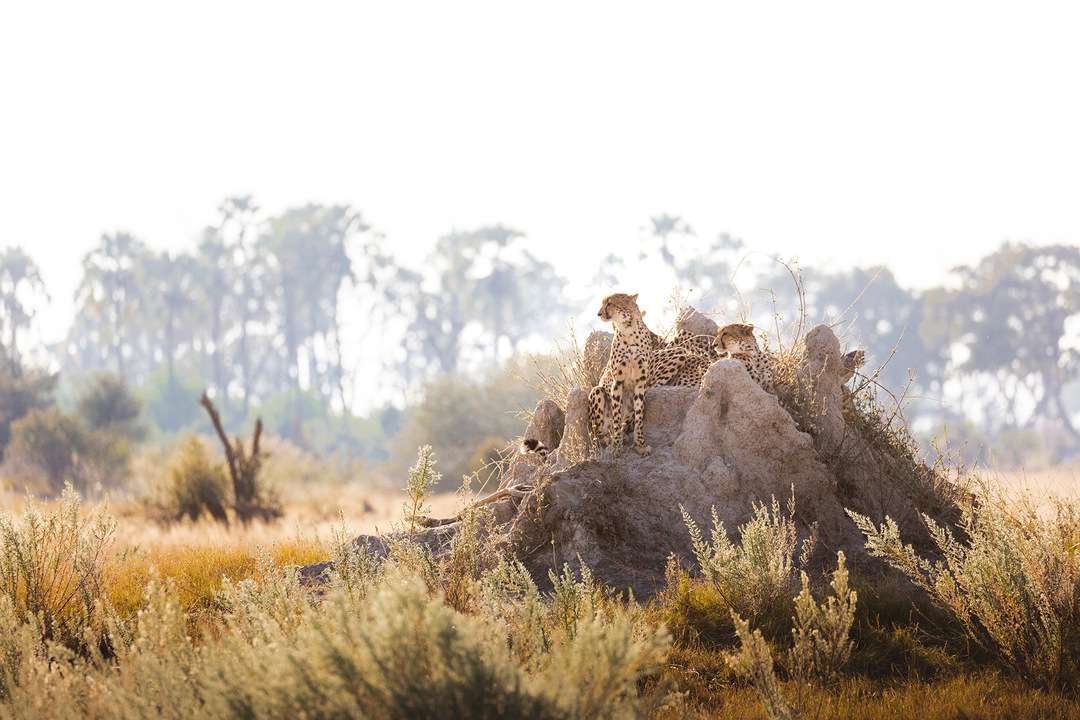
What Are Your Favourite Areas to Visit Around/In Camp And Why? Which Spots Are Guests’ Favourites? Which Places Are Best For Sundowners?
(Moalosi) The Gomoti River is one of the most impressive and scenic waterways in the area, a favourite place to visit especially when the waterholes are drying up elsewhere. Animals are drawn close to the river and riverbeds for water and grazing. One gets great birding moments here as well, particularly water birds. Guests also enjoy sightings of large pods of hippos at Gomoti, both in and out of the water – watching their amusing displays such as swimming skills, sparring, grunting, and bellowing in the water. Plenty of crocodiles there will also entertain.
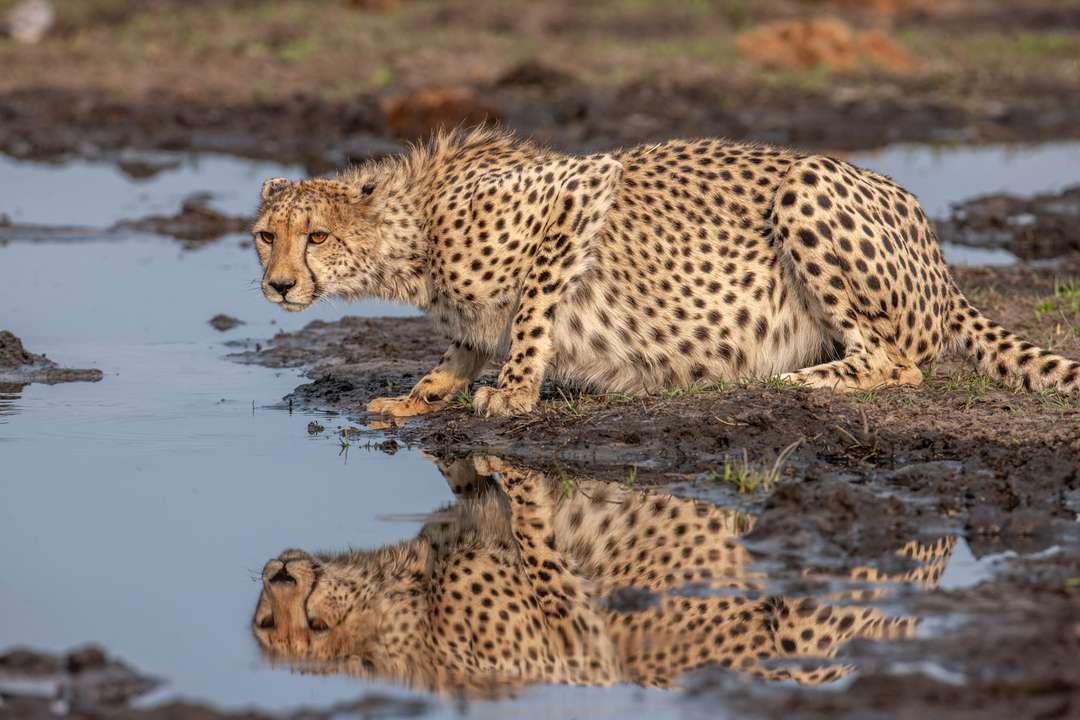
Visiting the vast, open grasslands in search of cheetah is always another exciting adventure. Chitabe has many seasonal waterholes that dramatically reflect the sunset, creating an astonishing photo opportunity. Tall palm trees etched along the endless horizon make a striking backdrop for sunrises, sunsets, and moonrises. Sundowner setups are part of our tradition at Chitabe, where people celebrate sunsets with fresh homemade snacks and cocktails accompanied by sunset photography tips/lessons shared by our passionate guides. Actually, Chitabe’s diversity is so incredible, the whole concession is my favourite area.
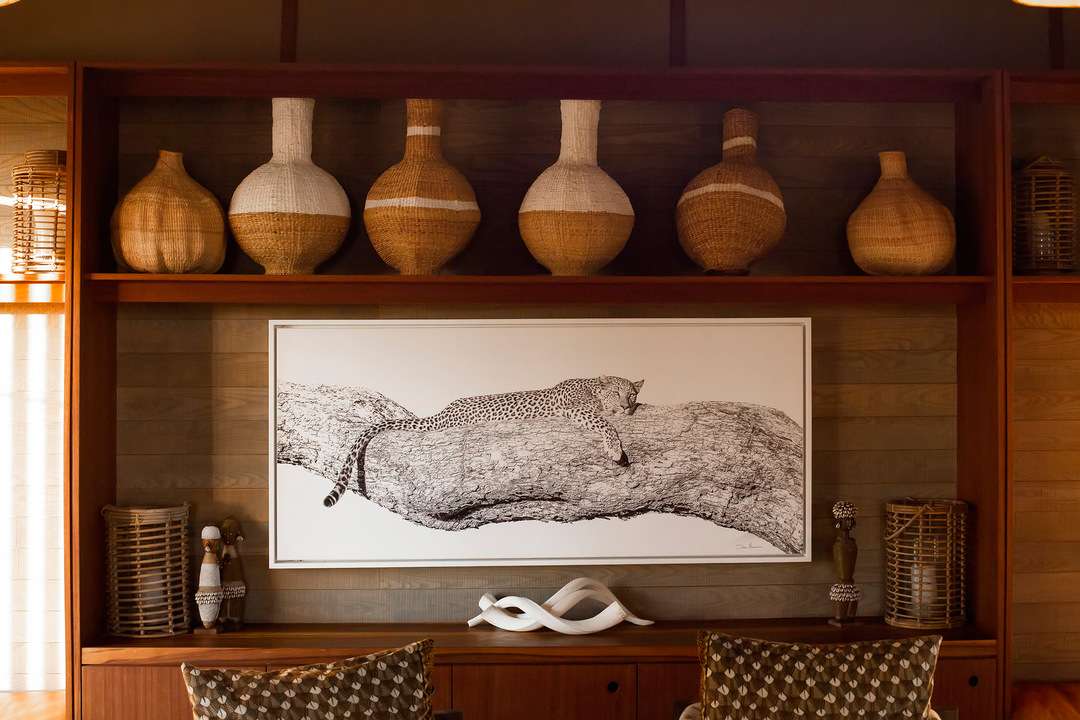
(Helene) I love Chitabe’s library for a quiet place to sit and absorb the surroundings. Sundowners at the Chitabe and Lediba pools are the perfect spots to raise a toast to the end of the day, relaxing and unwinding while dabbling your feet in the cool water. We are fortunate that both camps are beautifully nestled amongst a thick canopy of trees, creating many lovely places to sit and observe nature all around you. The foliage creates an amazing backdrop and the branches are full of life, whether birds, squirrels, monkeys, or baboons. There is always something to watch while in camp.

Please Talk About The Décor/Design At Chitabe, In The Rooms As Well As The Common Areas.
(Helene) We tried to design Chitabe to be not only beautiful, but also logical and functional. Sun and other elements of nature are harsh on furnishings and fittings, so we did a great deal of research in order to find quality items that would weather well, blend in, and still be stylish. We also emphasised purchasing goods made in Africa; much of our furniture is locally designed and made. Most of Chitabe’s artwork consists of the large canvases by Dave Hamman, whose images were all photographed at Chitabe. These beautiful canvases give a real sense of place to the interiors and are unique to Chitabe. Many of our guests have purchased one for their homes. I love the fact that they take a small piece of Chitabe with them – hopefully it will compel them to return one day.
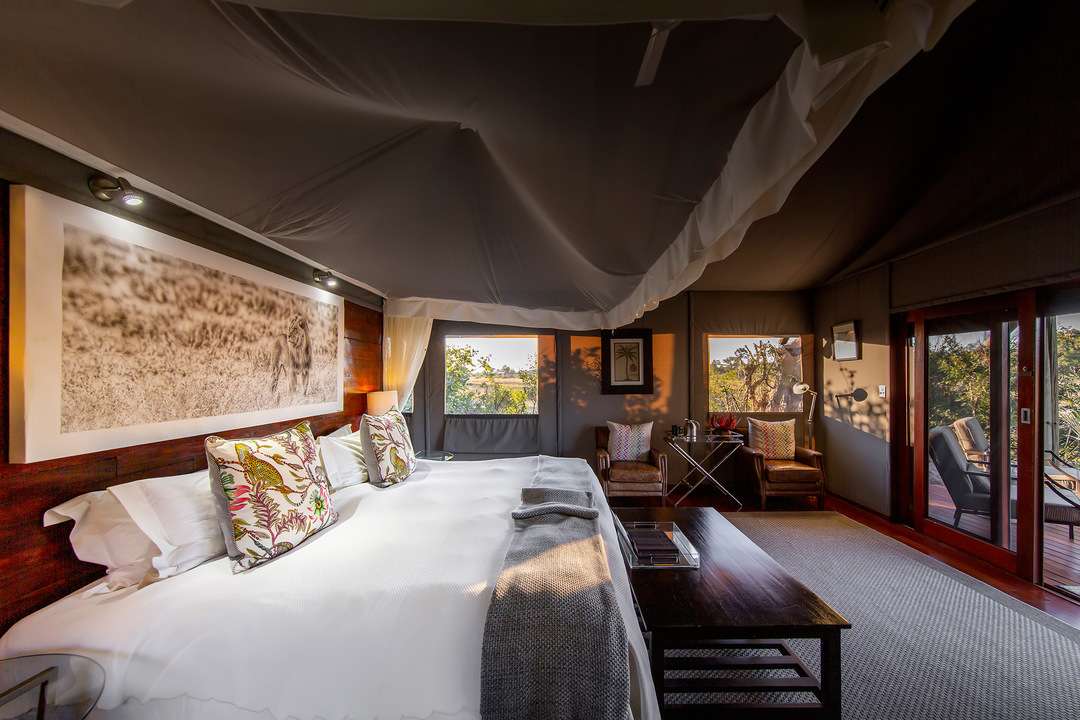
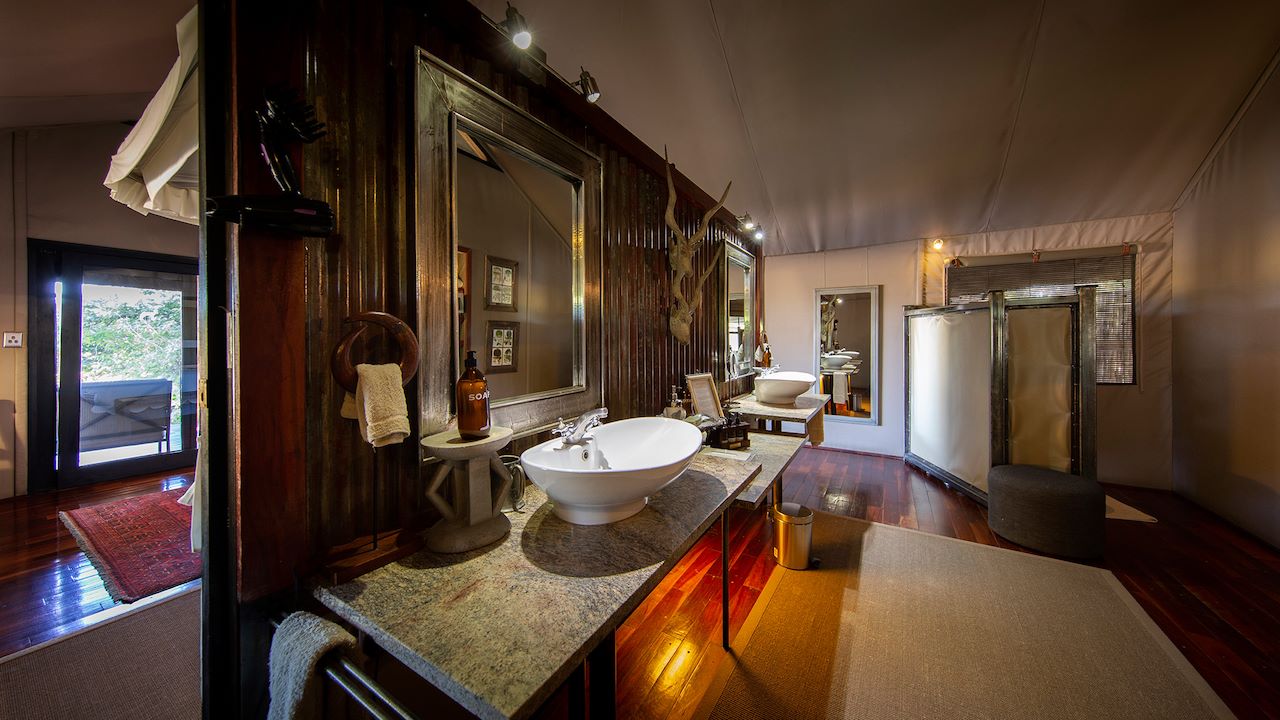
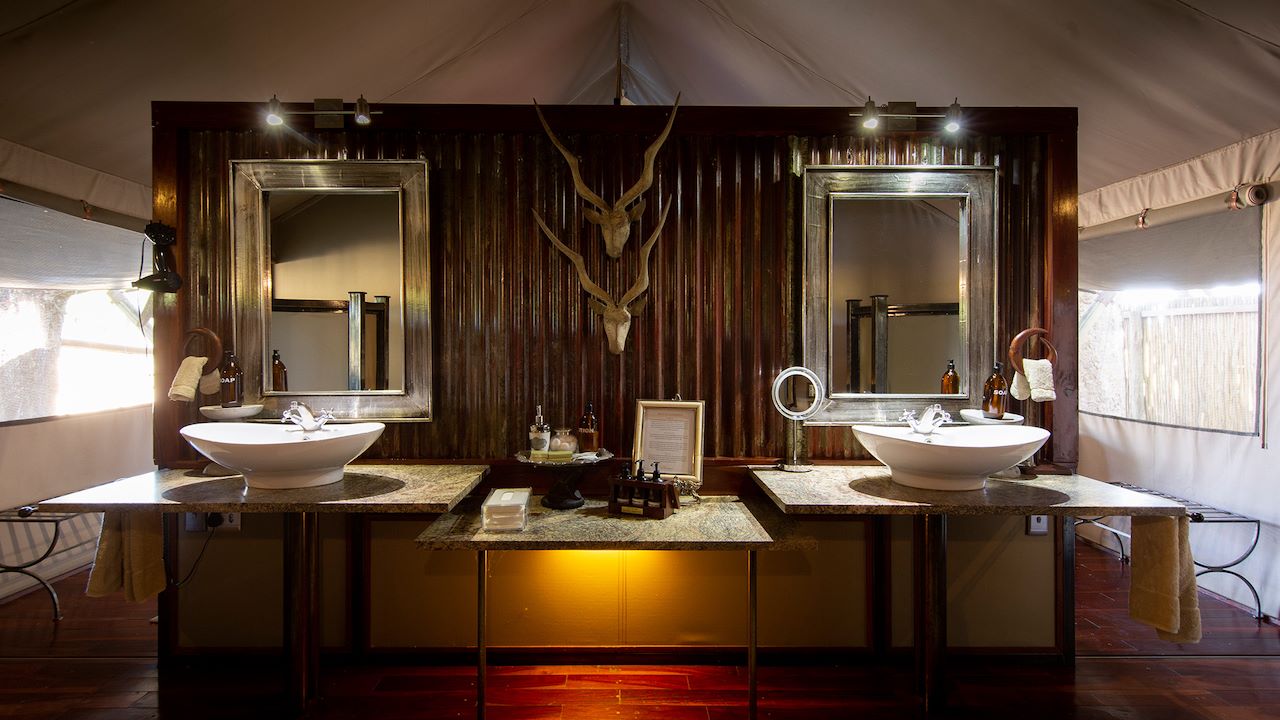


What Is The Dining Experience At Chitabe, And Some Highlights On The Menu? Please Share The Various Dining Options, In Camp And In The Bush.
(Helene) Chitabe’s dining experience has traditionally been one where the starters and desserts are served and the main course is a buffet. However, because the camps are so small, we can do just about anything that a guest, or group of guests, prefers. We are fortunate to have a whole host of dining spots and experiences at both camps, such as having a meal by the swimming pool; dining under the stars; having a romantic meal for two in the library; or dining in the privacy of one’s room. Many of our guests love the communal dining experience, where the conversations are often so engaging and entertaining – having a meal together can mean making friends. Other guests prefer to eat totally privately. We strive to be flexible and accommodating – to ensure that all our guests are happy.
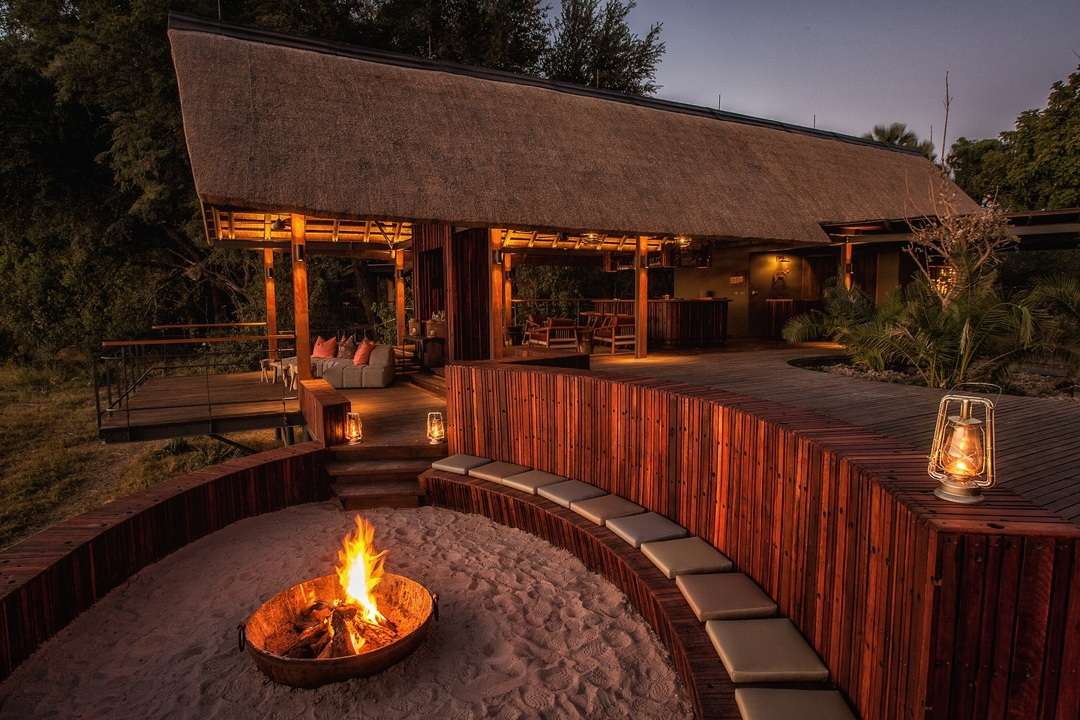
Some menu highlights would be the pearl barley and buttered mushroom salad; grilled chicken, peach, and goat’s cheese salad with candied pecan nuts; smoked bream pate; nectarine and tomato gazpacho; whole beef fillet with mushrooms and mustard sauce; Moroccan venison tagine; and, finally, a few scrumptious desserts such as white chocolate tiramisu or pineapple tart with honey- chamomile ice cream.
(Moalosi) Lantern-lit dinners at the kgotla (boma) or in the bush with open-air dining under the stars are simply sensational. Bush brunches are often enjoyed at various sites, including places overlooking seasonal waterholes.
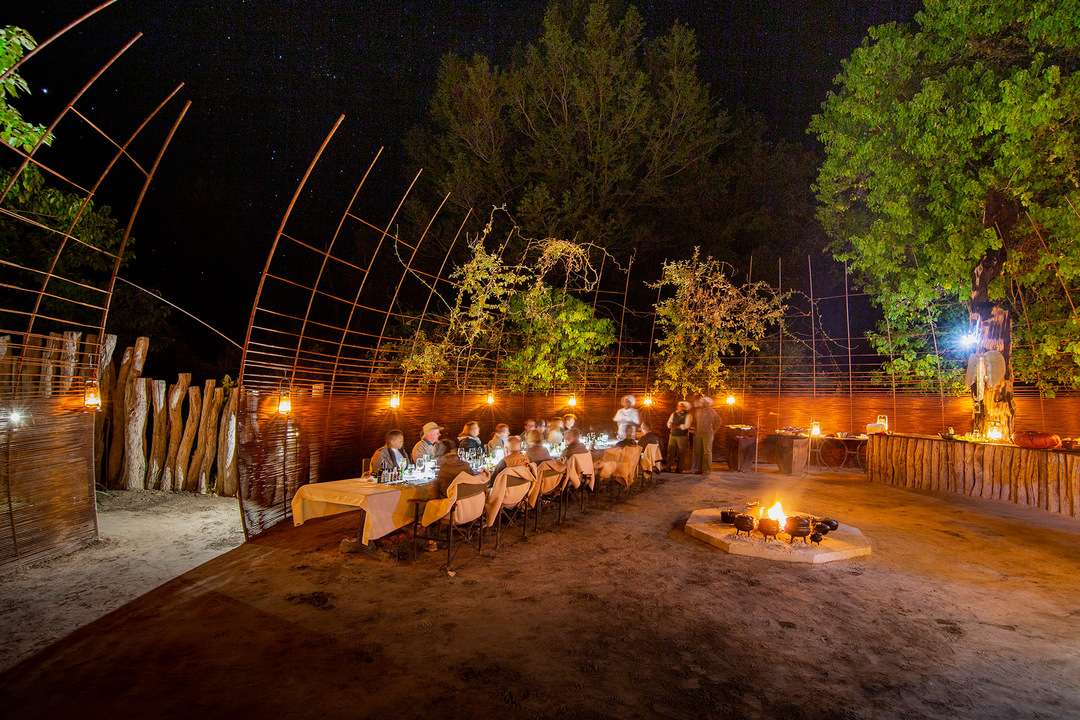
Does The Camp Have A Signature Cocktail?
(Helene) One of the most requested cocktails is actually a non-alcoholic one, made using fresh lemons and ginger – thirst-quenching and healthy, too. We can’t make enough of them! To make our:
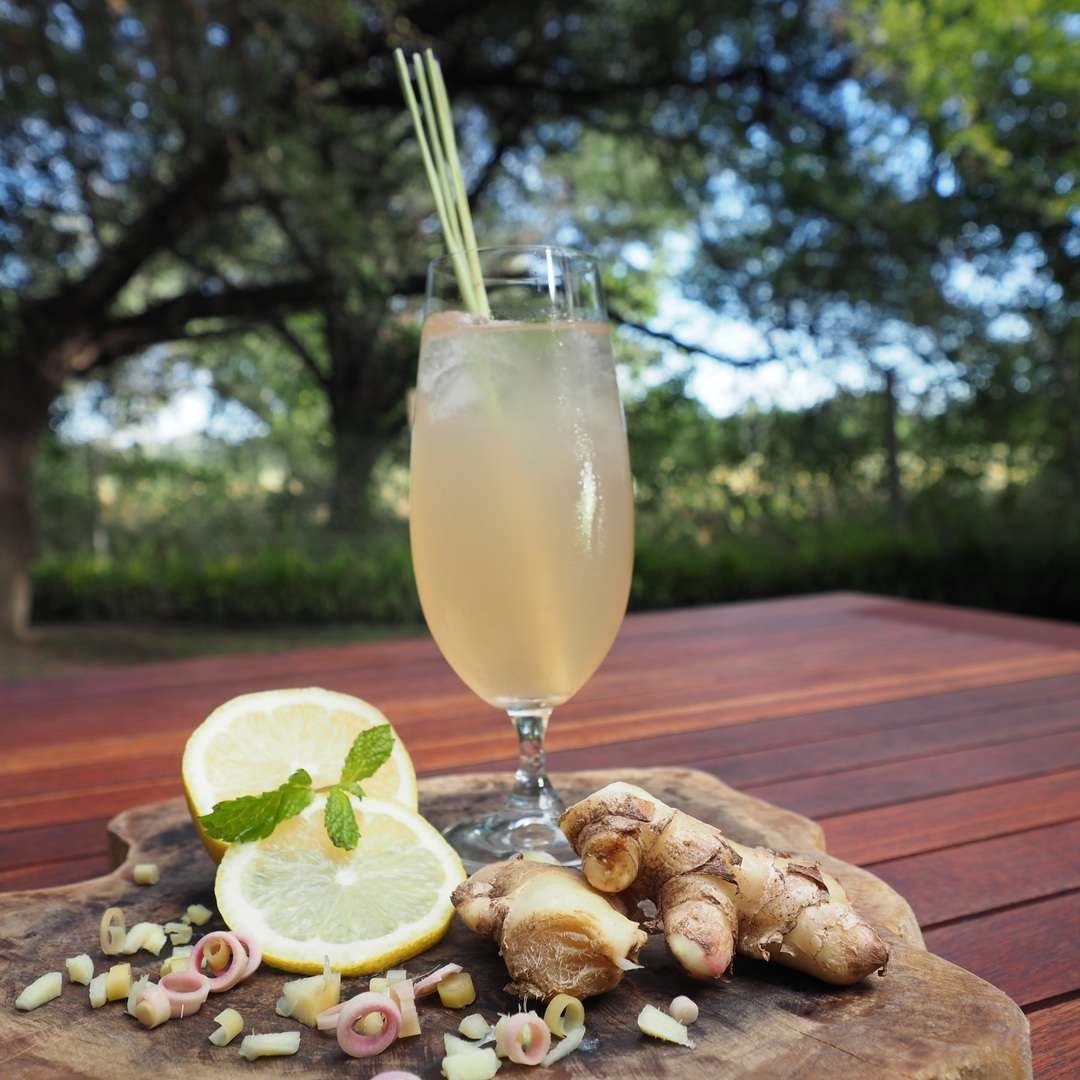
Lemon-Ginger Welcome Drink
MAKES 2 LITRES
2 litres clean, fresh water
250g fresh ginger root, chopped
fresh lemon juice from 3 whole lemons
½ of a teacup brown sugar to taste (can use honey instead)
2 sticks fresh lemon grass, chopped
Add all ingredients to the water and heat on the stove to a boil, then simmer until a golden colour. Strain and let cool. Serve with ice and a sprig of mint.
Add a tot of gin or vodka and lots of ice for an alcoholic version.
What Makes You Most Proud Of Chitabe, And Working There?
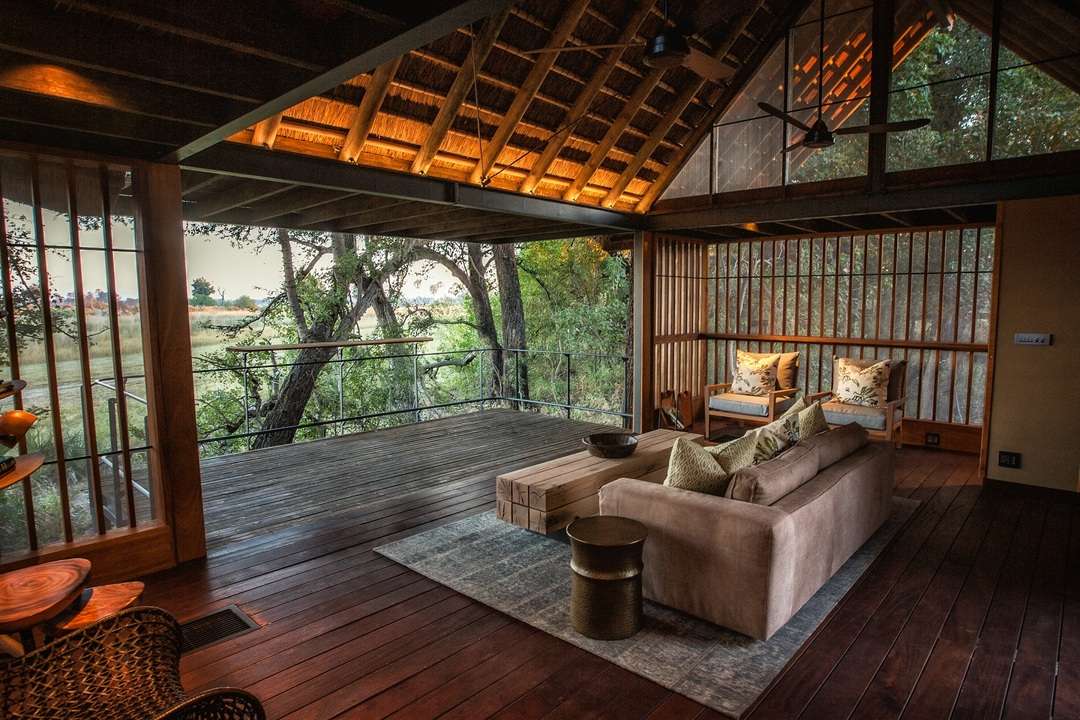
(Moalosi) It is always exciting to work for a company with such an established history of great leadership in the industry. The inspiring leadership style, focused on staff motivation, inspires one to have a sense of ownership of the place; support is always given for our team to thrive, motivating our professionalism and work ethic. It is rewarding to work for a company that recognises you as an asset – making you aware and understanding of the company’s vision, which empowers you to work hard to achieve maximum growth. At Chitabe we always have the opportunity to learn and enhance our personal growth, due to management’s commitment investing in staff knowledge and development through refresher training, such as photographic and safety courses. All guides at Chitabe have completed photographic courses in order to assist guests, even the most experienced photographers.
Chitabe’s commitment to putting the environment first by fully complying with relevant environmental regulations also makes me proud. Policies and practices are openly communicated to staff, guests, and all other parties involved. All staff are inspired to participate in the effort to protect the environment through necessary training, with all environmental impacts being recorded and monitored.
Then, of course, I am extremely proud of the incredible diversity of wildlife here.
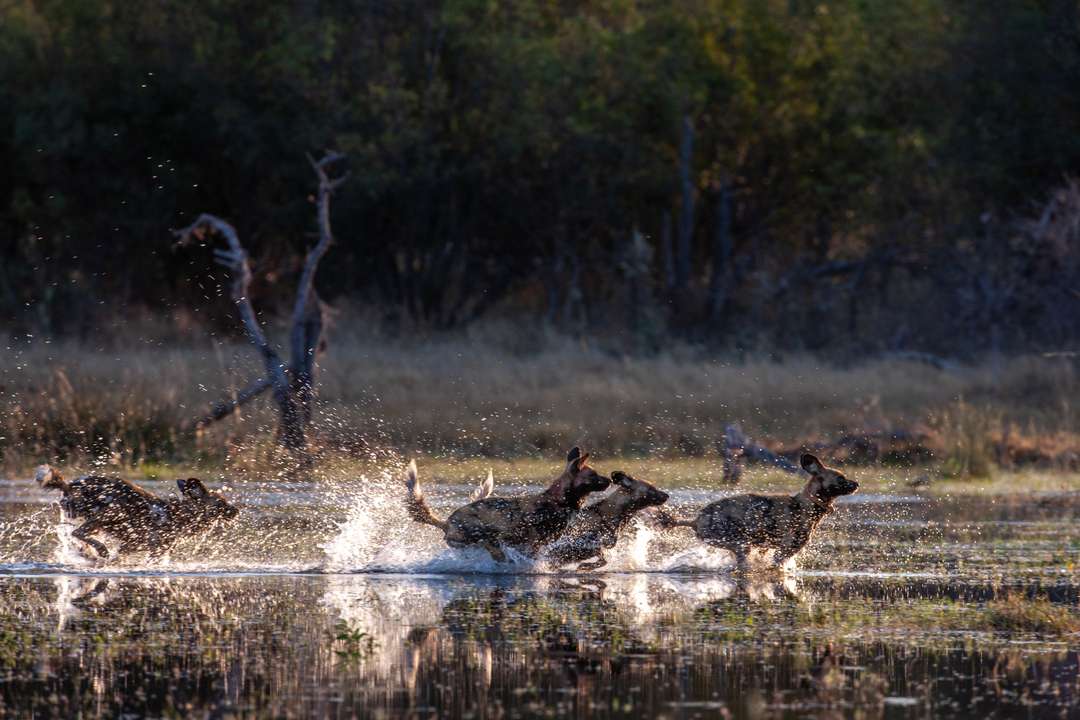
(Helene) What makes me most proud is when a guest or staff member has told us that Chitabe has made a difference in their lives. We are so fortunate to work in the most amazing environment and to have the opportunity to meet wonderful people from all over the world. Seeing people happy, engaged, enthralled, amazed, excited, and appreciated is a gift, and never ceases to make me feel blessed to be part of the journey.
I’m also proud that so many of our guests come back to Chitabe again and again, clearly a sign that they enjoyed themselves, felt at home and well looked after. With so many options available to our guests, the fact that they chose to visit us again is deeply humbling and an enormous compliment. So many guests return not just because of the outstanding wildlife experience here, but also because of our staff – which makes me immensely proud. We have always strived to be a family and to create a family atmosphere at Chitabe. When our guests return, it’s clear that the feeling was mutual, and that is wonderful.
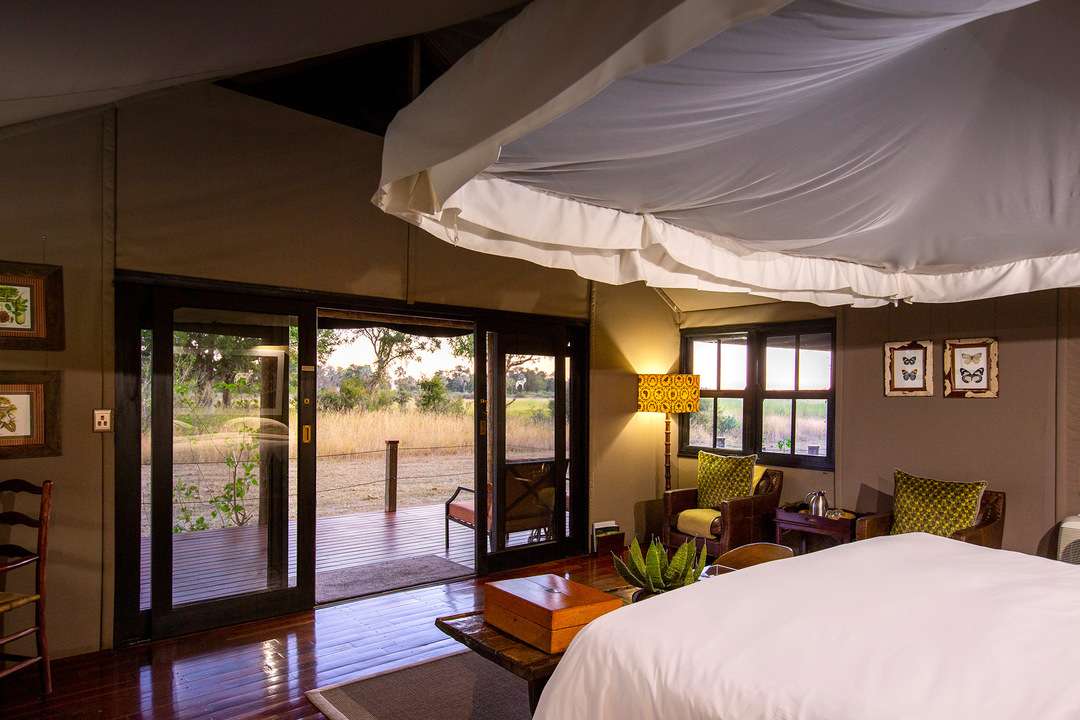
Who comprise the Chitabe staff? Please tell us a bit about their backgrounds, training, service, relationships with guests etc.
(Helene) Between the two camps, we currently employ 82 staff members. All our staff are Batswana, from various areas around the country. Some are from the Gaborone area, others from Francistown, Maun, and Kasane. More than half our employees are female; our team is headed up by our General Manager, Josephine Ndana. Ebineng, Joseph, and Nurse have all been with us for more than 20 years; our 15-year service awards go to Gabby, Ketsenye, Ruth, Kathi, Sega, Kenny, and Ma Jackson.
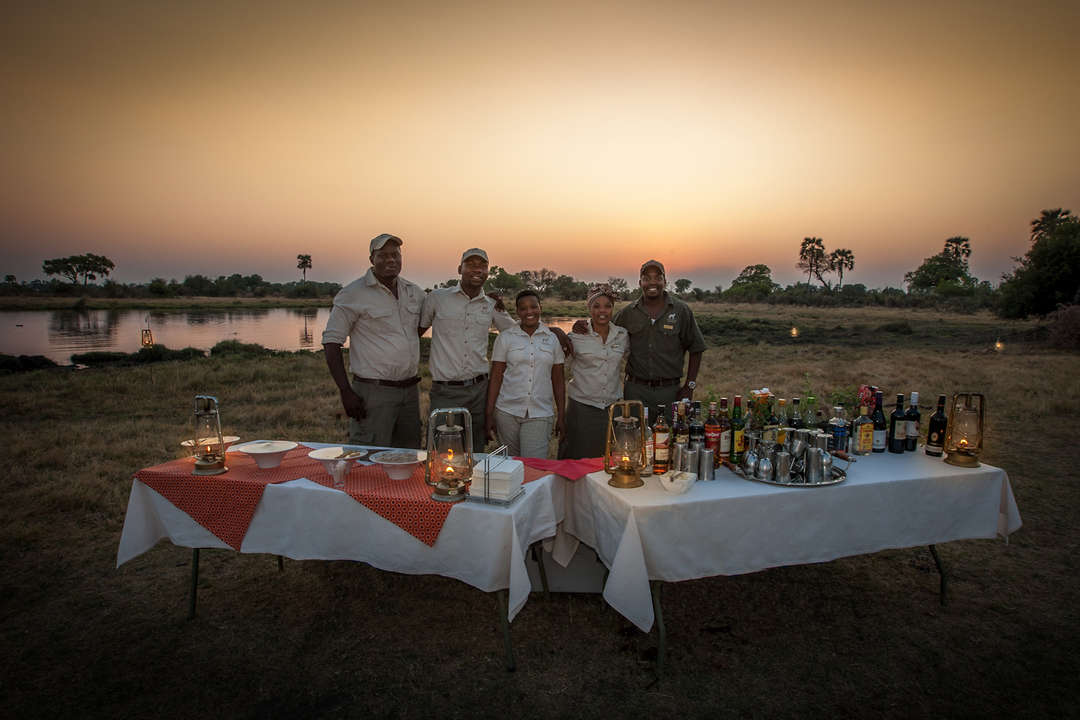
Our guiding team is one of the most qualified in all of Botswana, with every guide having obtained their walking qualification certification. Some concessions have only one walking qualified guide, but we proudly have nine (Anthony, Duke, Ebineng, Goodman, Lesh, OB, OD, Phinley and Tank). So the depth of our guiding team is enormous, and having worked as a team for years, they work together effortlessly and generously.
Our head chefs, Kenny and Kay, run their kitchens with flair and efficiency. We strongly encourage continued skill development and ongoing training in all departments, such as sending two members of our front-of-house team down to Cape Town to do a four-day wine course in the winelands. Our camp management team has worked together for years and does a brilliant job. At Chitabe we have Josephine, Masedi, Lux, Gloria, Se, and Bamps and at Chitabe Lediba we have Moalosi, Joyce, and Si with General and Owen heading up the maintenance teams.
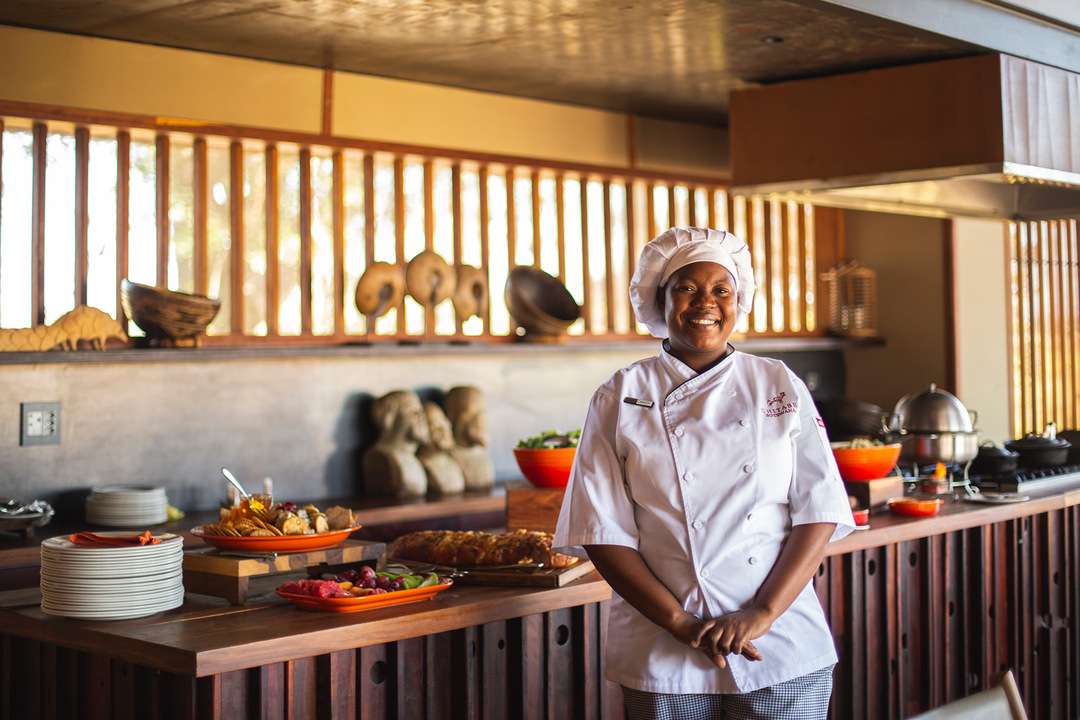
Are there any plans to change Chitabe in any way, or any new, recent developments there?
(Helene) We recently rebuilt the walkways and communal areas at Chitabe. Their design and construction supervised by architects Mark Thomas and Chris Bisset, in collaboration with Henry Fagan Engineers, the new walkways feature sinuous curves and gracefully meander through the tree line. The low-footprint longer spans create a more delicate-looking structure that weaves through the island. The communal areas combine modern and traditional materials to produce an environmentally respectful safari experience. We are continually maintaining and replacing our infrastructure to ensure that both camps always look their best. We are always looking towards the future, and once we have decided on future plans, we will be sure to let you know.
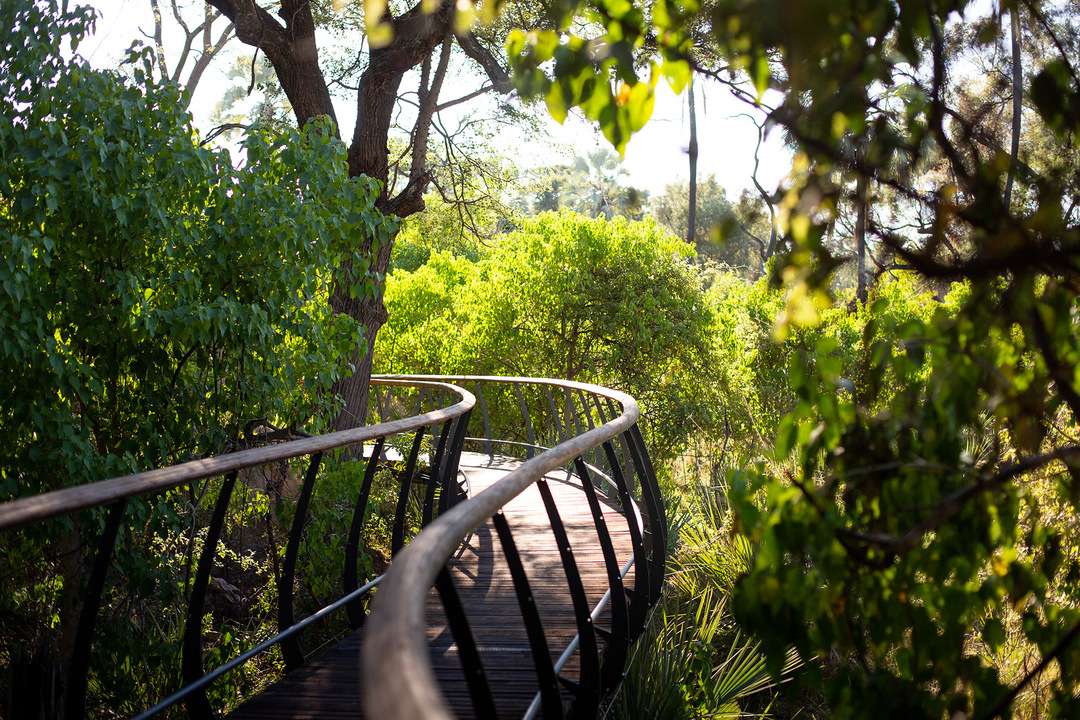
What Feelings/Impressions Would You Most Like Guests to Take Away?
(Helene) I would love for our guests to appreciate not only our dedication to their wellbeing and our efforts in sharing a unique experience with them, but also our dedication to improving the wellbeing of all our staff and their families, as well as our ongoing dedication to the environment and ecology. We work as hard behind the scenes as we do up front. I hope that all our guests understand how much we value and appreciate them. By coming to Chitabe, they are making such a positive difference to so many people and enabling us to protect the future, our communities, our wildlife, and our wildernesses.
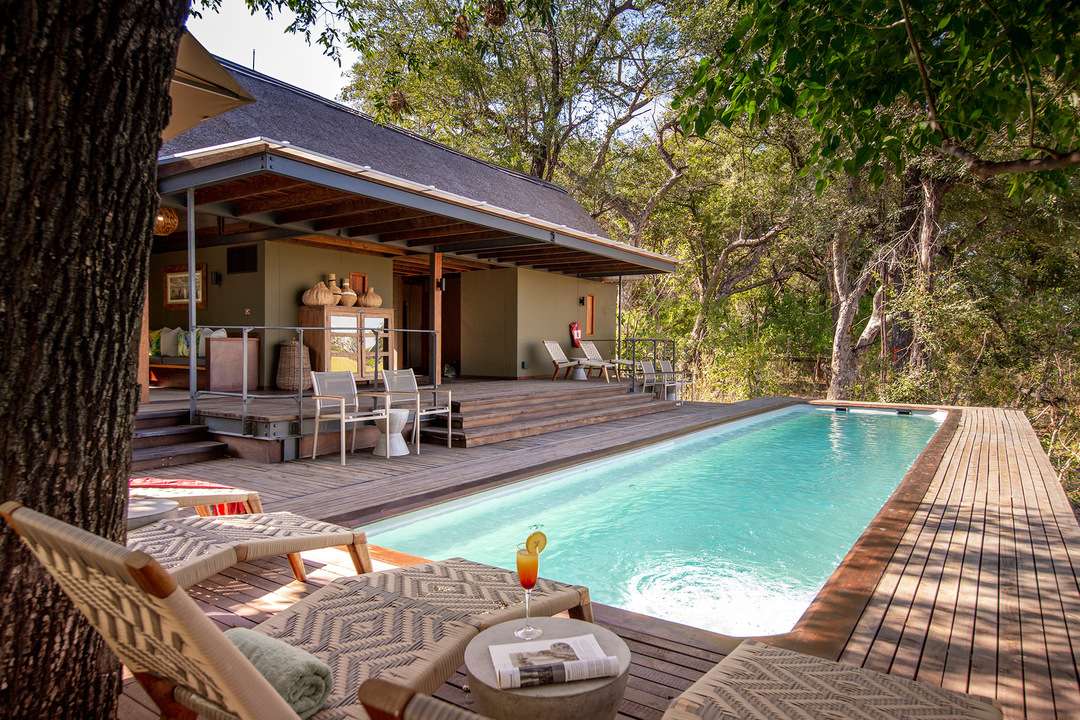
(Moalosi) Guests should leave with the impression that our team has limitless passion to care for them. They do, in fact, sincerely express their appreciation upon departure, if not before – telling us how professional our service was and how we made them feel at home. At Chitabe guests can count on the good company of camp staff exchanging stories from the wild, of cultural and traditional experiences in Botswana, all with friendly and relaxed faces. As they always say, it’s the people that make the place worth going to, and going back for.
Written by Melissa Siebert
More to discover

The benefits of a Botswana green season safari
Green season is a time of rejuvenation in Botswana’s wild areas. Learn more here about the benefits ...
Read moreTao Varty
04.07.2025

The Hoanib – Linear Oasis of the Namib
Ephemeral rivers are seasonal but sustain wildlife in dry area. Learn about Hoanib River formation. ...
Read moreMartin Benadie
30.06.2025
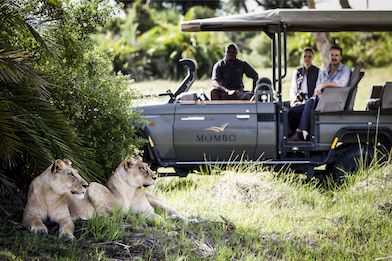
Spotlight on Mombo "The Mother of all Camps"
There’s an unparalleled culture of seven-star hospitality where everyone knows your name.
Read moreMelissa Siebert
19.06.2025

Spotlight On Linkwasha – Hwange National Park
A contemporary safari camp in an iconic African landscape, Linkwasha sits on the edge of the renowne...
Read moreTao Varty
09.06.2025
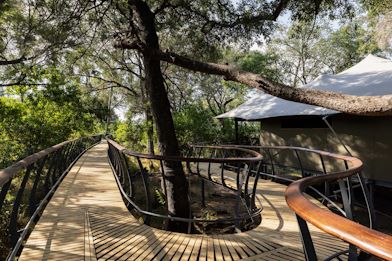
Wilderness Chitabe’s sustainable Okavango Delta safari
Discover Wilderness Chitabe’s blend of eco-luxury, conservation, and community in its approach to su...
Read moreMerryn Haller
09.05.2025

Let’s plan your next journey
Ready?
When we say we’re there every step of the way, we mean it, literally. From planning the perfect circuit, to private inter-camp transfers on Wilderness Air, and easing you through Customs. We’re with you on the ground, at your side, 24-7, from start to finish. Ready to take the road less travelled? Contact our Travel Designers to plan an unforgettable journey.
